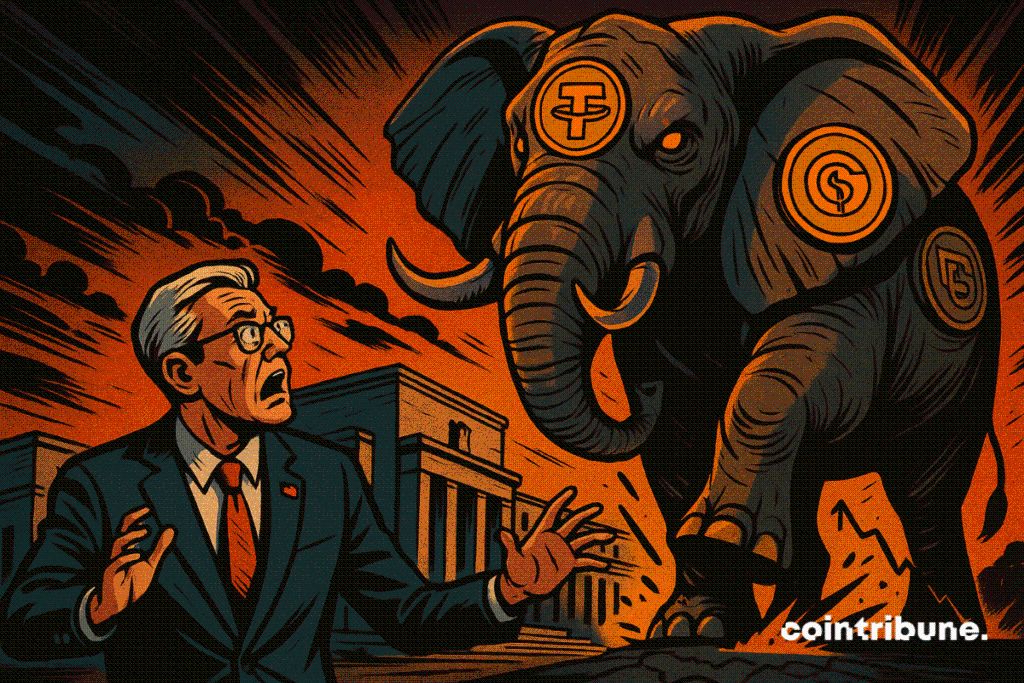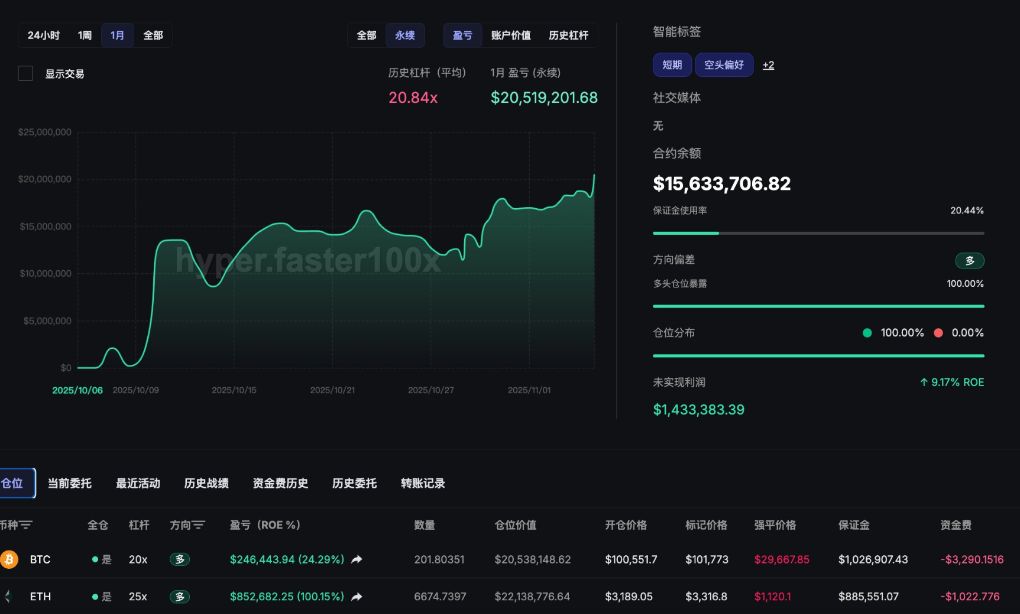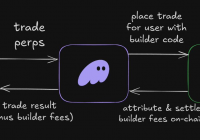Stablecoins Could Push the Fed to Reassess Its Monetary Policy
What if tomorrow DeFi signed the death warrant of traditional finance? While decentralized finance continues to gain ground, the tools it generates, such as stablecoins, now seem to weigh on central banks’ monetary decisions. The correlation is such that some, like Fed Governor Stephen Miran, speak of a paradigm shift. The crypto industry, once marginal, now pushes to reconsider the rules of the game.

In brief
- The Fed anticipates a decrease in the neutral rate due to dollar-backed crypto stablecoins.
- The crypto stablecoins market could reach $3 trillion by 2030.
- The GENIUS Act requires issuers to hold liquid dollar reserves for each stablecoin issued.
- Bank disintermediation could weaken the Fed’s traditional monetary transmission.
When Stablecoins Shake Up the Fed’s Tempo
Stephen Miran, Fed Governor, affirms: the rise of stablecoins could indeed influence U.S. monetary policy. According to him , the growing demand for these dollar-backed assets, potentially reaching $3 trillion within five years, is pushing down the neutral interest rate. He argues that, as a result, the equilibrium interest rate is lower in the presence of stablecoins than it would be without them.
Stablecoins, far from being mere internal tools of the crypto universe, are becoming powerful vacuum cleaners for U.S. Treasury bonds. Miran argues that they offer savers in emerging markets unprecedented access to dollar-denominated assets, where traditional finance often struggles to take root. He points out that U.S. capital markets remain the deepest in the world, driving economic growth, funding innovation, and allocating capital efficiently. Stablecoins, he suggests, could play a leading role in this dynamic, enabling dollar holdings and payments both domestically and across borders.
What if this was just the beginning? Global adoption, encouraged by transnational financial bridges, could change the game.
Crypto vs. dollar: a silent influence war
With over 99% of stablecoins pegged to the dollar, the supremacy of the greenback asserts itself… via crypto. Yet behind this dynamic, pressure is exerted on the traditional banking system. Purchases of stablecoins drain funds that would otherwise feed bank deposits. The result: gradual financial disintermediation that could weaken the Fed’s decision transmission.
The GENIUS Act , praised by Miran for its clear framework, requires a 1:1 reserve backed by safe assets. But it is not enough to regulate everything. Many non-American issuers still escape these obligations. And with ever more efficient crypto platforms, the appeal of stablecoins is skyrocketing.
Stablecoins may become a multitrillion dollar elephant in the room for central bankers.
Source: Speech by Stephen Miran, 11/07/2025.
A slow but deep shift, like a tide settling quietly.
A tide of dollars disrupting the global monetary order
An influx of dollar liquidity via stablecoins could heavily impact macroeconomic balances. The Fed, already facing a falling neutral interest rate, might be forced to revise its stance. Miran does not rule out an impact comparable to the “global saving glut” mentioned by Ben Bernanke.
In high inflation economies, these stable cryptos provide a refuge for households. But beware the downside: too much dollarization, and exchange rates lose their buffer role, increasing economic cycle volatility.
Key figures to remember:
- $3 trillion: high projection of the stablecoin market by 2030 (source: Fed);
- 99.6% of stablecoins are dollar-backed (source: DeFiLlama);
- Up to 40 basis points drop on rates (source: Azzimonti & Quadrini, 2024);
- Less than $7 trillion in Treasury bonds outstanding (source: Fed);
- The impact could reach 60% of the global saving glut (source: Miran speech, 2025).
A borderless crypto, an omnipresent dollar: here is an explosive mix for traditional economic models.
The Fed, despite some conciliatory speeches, remains cautious regarding the framework established by the GENIUS Act. An internal report even mentions “ critical flaws ” in this law considered too permissive for an asset with systemic implications. Decentralization disturbs, and the walls of traditional finance are wavering.
Disclaimer: The content of this article solely reflects the author's opinion and does not represent the platform in any capacity. This article is not intended to serve as a reference for making investment decisions.
You may also like
Morning Brief | The US Senate has passed a procedural vote on the "end government shutdown plan"; About 4.64 million bitcoins have been moved out of dormant wallets this year; Monad token public sale will start on November 17
Overview of major market events on November 10.

【Calm Order King】Trader achieves 20 consecutive wins: Who can stay calm after watching this?

ERC-8021: Ethereum’s ‘copy Hyperliquid’ moment, a new way for developers to make a fortune?

Morgan Stanley: The End of Fed QT ≠ Restart of QE, Treasury's Issuance Strategy Is the Key
Morgan Stanley believes that the end of the Federal Reserve's quantitative tightening does not mean a restart of quantitative easing.

Trending news
MoreMorning Brief | The US Senate has passed a procedural vote on the "end government shutdown plan"; About 4.64 million bitcoins have been moved out of dormant wallets this year; Monad token public sale will start on November 17
【Calm Order King】Trader achieves 20 consecutive wins: Who can stay calm after watching this?
